1st Look: BD’s JetForce® airbag pack
If you have ever used an airbag pack, even just practiced with one, you realize pretty quickly that you don’t want to actually be using the pack for its safety features. It’s too damn …
Technique: Stealth glading & construction
Let’s just call him Joe, for the sake of obscurity. Joseph Robertson if you must know his full name. Friends call him Joe Bob for short. He’s a trouble maker from way back. One …
It’s about the Tour, NOT the Turn
It didn’t take long to figure out that turns taste sweeter when you earn them. After all, the more you pay for something the better it is supposed to be, even if you have to …
TR (’94): Skiing the Wickersham Wall – Part I
A slide now, while skiing in the center of the upper face, would carry me over 10,000-feet over cliffs and icefalls to a frozen, broken death. But we were confident in the results of our snow stability tests and I was having the run of my life, the culmination of every moment I’ve ever spent in the mountains. The higher power, grinning from ear-to-ear, had given us the nod. We got away with it!
The Need for Knee Pads
Make no mistake about it, if you telemark, it’s not a matter of if, but when you will need a pair of knee pads to save your precious knees. You can make all the excuses …
First Look: Moonlight’s Tele Tech Bindings
Interest in telemark bindings with a tech toe gained more advocates last week as fourteen writers and photographers from around the world tested beta versions of Moonlight Mountain Gear’s new telemark tech binding. Conceptually …
Profile: Steve Barnett – Telemark Prophet
We’re in the middle of talking skis and tele and tours and gear and the state of the art back in the day compared to now when Steve unequivocally declares, shifting his voice for emphasis, …
Tech Tip: Making a Buckled Power Strap
One of the best developments to come out of the latest round of AT boots is a buckled power strap. From a strictly mechanical point of view it does not necessarily equal a buckle, …
Tele Gear for Newbies
There’s a really good chance you’ll think of my advice on picking gear for telemarking as just another died in the wool leatherneck recommending old-fashioned values just because that’s the way he did it. …
Redux: Ortovox recalls S1+ (again!)
While cruising the recent Outdoor Retailer Summer trade show, Ortovox reps asked me to remind S1+ users to observe the ongoing recall and the need to send their beacon in to be fixed. Based on …
Review: Voile Vector
First Impressions Conditions were suspect for my maiden voyage on Voile’s Vector ski with their Switchback X2 binding. Nonetheless they delivered admirable performance. A good six inches of heavy snow had fallen a day earlier. …
Review: Blizzard’s Zero G
Last week I managed to get out on Blizzard’s Zero G for two days and can confirm they are a worthy contender for next year’s addition to your quiver. The Zero G is Blizzards entry …
Feb 05 2013
Nachtspektakel returns to Squaw
- By Dostie
- 3 mins to read
Tickets for the event are $50 if purchased before the event, $60 at the event. Meet in front of Squaw’s Tram station to sign-in at 2:30pm. The hike to High Camp commences at 3pm TST (Tahoe Sharp Time, as in, really, we mean it, really, snooze you lose, loser). The first two drinks at High Camp are included, plus a three course meal.
Keep making backcountry turns
Feb 04 2013
OR Report: Splitboard Bindings
- By Dostie
- 5 mins to read
Truth be told, I consider myself one of them since there was a time when I enjoyed the experience of only making a dozen turns on slopes that used to call for 50 or more. Riding with two legs on one plank offers a powerful dose of adrenalin. Better yet, pull out the stops and ride a longboard where three turns to the bottom is all you need to peg the thrill meter in the red zone.
In case you haven’t noticed, splitboarding has come of age. Interest has grown and the key components are being refined. Here’s a quick round up of two things I tripped across while wandering the aisles at the recent Outdoor Retailer show. There is a ton more going on in the splitboard world, so consider this a mere teaser of things to come next year.
Keep making backcountry turns
Jan 31 2013
Technique: Modifying TTS Heel Post
- By Dostie
- 3 mins to read
The height of the original heel post and cable posts tended to lift your boot too much, yielding a mild tippy-toe sensation. Far less than the days of rocker launch with the original Cobra, but annoying nonetheless.
Keep making backcountry turns
Jan 29 2013
Fritschi Diamir’s NEW Zenith 12 Tech Binding
- By Dostie
- 3 mins to read
Although there is no standard for calibrating the release values of lightweight, 2-pin tech bindings (Dynafit), Thomas Laakso, Black Diamond’s ski products manager says, “it passes all safety release tests for existing alpine and AT norms.”
The current trend in AT skiing has resulted in a polarized market. Experienced backcountry skiers know that light is right so they buy Dynafit or tech bindings that are knock-offs of the original, patented Dynafit concept. On the other hand, alpine resort converts think weight is great so they prefer heavier plate style bindings that work with alpine boots with DIN standard soles.
Keep making backcountry turns
Jan 28 2013
OR Report: Urban Ski Tour in the Wasangles
- By Dostie
- 5 mins to read
Saturday’s tour was a classic. The “greatest snow on earth” term was referred to as an example of how wrong it can be in reality. There were all the classic ingredients one might expect for an urban tour in the Wasangles range, easy access but lacking the wildness of a true wilderness. Salt Lake City was hidden beneath an acrid cloud of smog but the hum of more than a million people going to and fro made an ironic background noise.
Dog poop littered the trail in descending frequency as we skinned up. It disappeared when we veered off the main path towards the ravine where Neffs cave is hidden. Tele Mark’s baritone boomed out with a steady stream of gear babble on the climb up. Howie held down the procession as trail sweep while I got into my usual diatribe on skin track angles. Inevitably this led to issuing Mark a citation for setting a steep skin track. The way I figure it, every degree over 15° demands a stiff $10 reprimand. His citation was for $100.
Keep making backcountry turns
Jan 25 2013
OR Report: Interest in airbag packs explodes
- By Dostie
- 3 mins to read
Can the US market really support more than a dozen airbag manufacturers? That’s right, there’s thirteen I know of that plan to distribute airbag packs next season, and two more soon after.
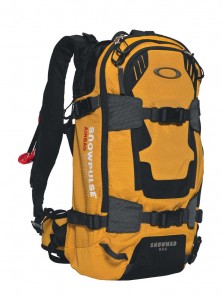
Even Oakley is getting in to the action with a smartly styled airbag pack, powered by Mammut’s Removeable Airbag System, pioneered by SnowPulse.
Keep making backcountry turns
Jan 24 2013
OR Report: Backcountry Access’ BC Link
- By Dostie
- 3 mins to read
Tracker3™ – 20% lighter, w/real-time digital processing and signal separation for marking multiple victims.
The Tracker3™ is the follow up to the Tracker2™, utilizing the same real-time digital processing but now with the ability to separate multiple signals and mark a beacon you have located. Although this is supposed to be old news, the beacon shown last August didn’t work. Whether the software is ready for prime time won’t be known until they ship.
With interest in airbag packs running at a fever pitch BCA’s plans are to simply meet demand. This year’s revision to the 32 liter Float pack was a nice improvement with none projected for next season (yet).
Keep making backcountry turns
Weather
BC Ski Sites
- Backcountry Mag
- BC Skiing Canada
- Dawson's WildSnow
- First Tracks! Online
- Front Range Skimo
- Kick 'n Glide
- Off Piste Mag
- Sierra Descents
- SierraNevada Tours
- Ski Mountaineering.org
- Ski Tahoe BC
- Skin Tracks & SkiMo
- SMS
- Splitboard.com
- Straight Chuter
- Telemark Skier Mag
- Thompson Pass AK
- US SkiMo Assoc.
- Wenatchee Outdoors
- WhereShould I Ski?
- White Planet.it
- WOWasatch
Couloir Archives
Archives
- February 2020 (2)
- December 2019 (1)
- November 2019 (2)
- October 2019 (1)
- September 2019 (2)
- August 2019 (1)
- February 2019 (3)
- January 2019 (3)
- November 2018 (2)
- October 2018 (1)
- April 2018 (1)
- March 2018 (3)
- February 2018 (7)
- January 2018 (2)
- November 2017 (3)
- September 2017 (1)
- August 2017 (1)
- March 2017 (1)
- February 2017 (3)
- December 2016 (1)
- November 2016 (1)
- October 2016 (2)
- June 2016 (1)
- May 2016 (3)
- April 2016 (4)
- March 2016 (5)
- February 2016 (5)
- January 2016 (5)
- December 2015 (7)
- November 2015 (7)
- October 2015 (4)
- September 2015 (4)
- August 2015 (6)
- July 2015 (2)
- June 2015 (5)
- May 2015 (5)
- April 2015 (7)
- March 2015 (7)
- February 2015 (10)
- January 2015 (11)
- December 2014 (7)
- November 2014 (9)
- October 2014 (12)
- September 2014 (10)
- August 2014 (10)
- July 2014 (9)
- June 2014 (6)
- May 2014 (7)
- April 2014 (9)
- March 2014 (10)
- February 2014 (12)
- January 2014 (18)
- December 2013 (13)
- November 2013 (8)
- October 2013 (10)
- September 2013 (12)
- August 2013 (9)
- July 2013 (11)
- June 2013 (6)
- May 2013 (9)
- April 2013 (9)
- March 2013 (11)
- February 2013 (14)
- January 2013 (13)
- December 2012 (9)
- November 2012 (12)
- October 2012 (13)
- September 2012 (12)
- August 2012 (13)
- July 2012 (14)
- June 2012 (12)
- May 2012 (12)
- April 2012 (15)
- March 2012 (17)
- February 2012 (17)
- January 2012 (16)
- December 2011 (11)
- November 2011 (11)
- October 2011 (12)
- September 2011 (11)
- August 2011 (7)
- July 2011 (8)
- June 2011 (7)
- May 2011 (7)
- April 2011 (10)
- March 2011 (12)
- February 2011 (9)
- January 2011 (8)
- December 2010 (9)
- November 2010 (5)
- October 2010 (8)
- September 2010 (6)
- August 2010 (4)
- July 2010 (3)
- May 2010 (1)
- April 2010 (1)
Thanks for your support
Like what you read here? Cool! It is a labor of love, but love don't pay the bills. Your support is humbly requested, and graciously appreciated. Thank you!
Thank you Quadzilla for your generous contribution (>$100) in support of this site. I am honored by your support and readership.
Please be aware that online purchases of equipment shown on this site through affiliate retailers will also help support this site by earning a commission for EYT. Thanks again for your interest and support.

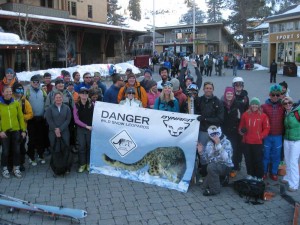
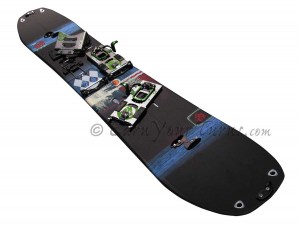
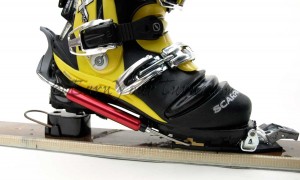
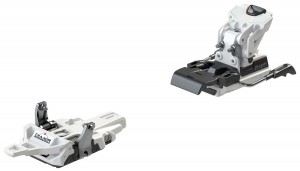
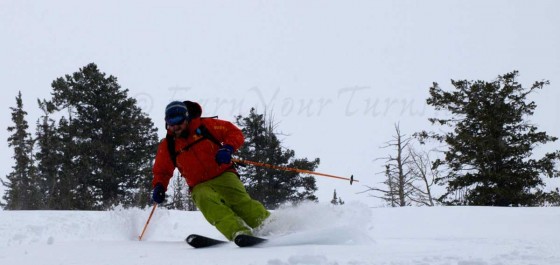
Recent Comments